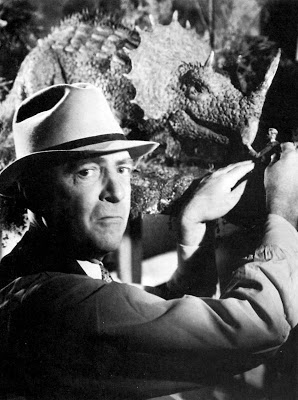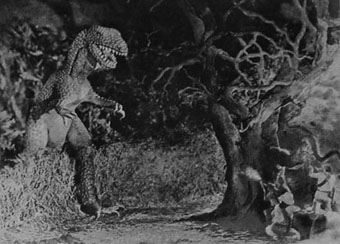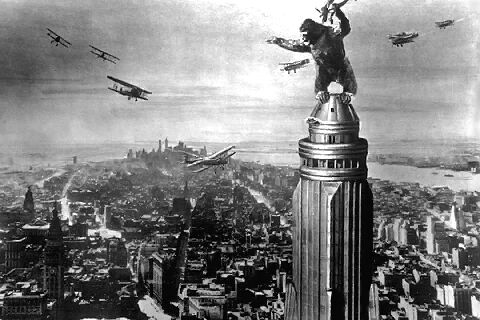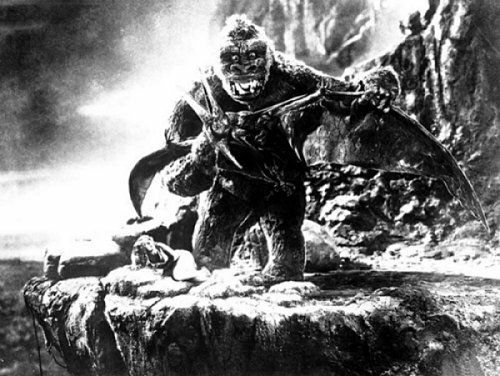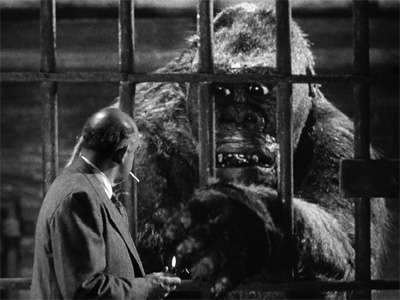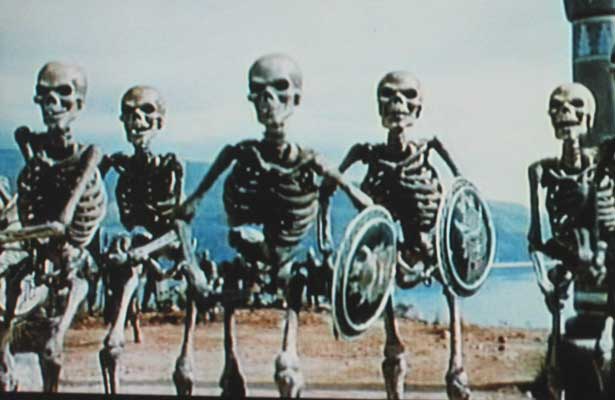Before CGI spectacles filled movie screens, the realm of wondrous and delightful special effects drew on a variety of creative techniques to bring new visions and new sensations to moviegoers.
One of the most popular forms of special effects, particularly in big science fiction and fantasy films, was stop motion animation.
Though still used occasionally today, stop motion was really at its peak in big Hollywood films in the pre-CGI days, in the hands of master craftsmen like Willis O’Brien and Ray Harryhausen.
Stop motion wasn’t just a pre-cursor to the slick effects that can be provided by computer systems. It was a unique art form that reveled in its fantastic qualities, reminding audiences that they were witnessing the impossible. Images of KING KONG, or the army of skeletons from JASON AND THE ARGONAUTS, remain in the memories of film fans everywhere.
The first Hollywood film to really showcase the power of stop motion special effects within a feature-length narrative film was THE LOST WORLD, which was released by First National Pictures in 1925. Adapted from the novel by Sir Arthur Conan Doyle, the film was the perfect vehicle in which to employ the art of stop motion. Its special effects were achieved by Willis O’Brien, who is generally regarded as the pioneer of stop motion.
When THE LOST WORLD first appeared on screens in 1925, its special effects, at least on the scale in which they were executed, were unprecedented.
The film told the story of Professor Challenger (Wallace Beery), who leads an expedition to a remote corner of the globe where he claims to have discovered the last remaining dinosaurs. He puts together a group including the daughter of an explorer who was lost on a previous expedition to the same territory (played by Bessie Love), a reporter (Lloyd Hughes), and Sir John Roxton (Lewis Stone, years before he achieved immortality as “Judge Hardy” in the ANDY HARDY pictures at MGM). When the party arrives at the “lost world”, they encounter a variety of prehistoric beasts, brought to life through the magic of stop motion. Their trip ends with the capture of a brontosaurus, which is brought back to London to be put on display as evidence of Challenger’s claims. Of course, the brontosaurus breaks loose, wreaking havoc on the city.
The story itself was not the main drawing point of the film, of course, and indeed, it was directed by Harry O. Hoyt, who is certainly not one of the better-remembered directors of the silent era, and whose other films are largely forgotten today. Despite some first-rate actors in the cast, the real stars of the show were O’Brien’s various stop motion creations. What the film lacked in strong narrative it made up for in breathtaking special effects. Particularly well-staged were the fights between the monsters, which saw O’Brien’s model dinosaurs interacting fiercely with incredibly fluid motion.
The basic premise of THE LOST WORLD would serve as a model for the next major film O’Brien would work on. Although based on a story by Edgar Wallace, KING KONG owes a lot a to the structure of THE LOST WORLD, particularly in its finale.
KING KONG begins on a foggy, nocturnal pier in New York City, where a boat is preparing to set sail at dawn for a mysterious voyage to an uncharted island.
The man behind this mission is Carl Denham (Robert Armstrong), a film producer and showman who is determined to bring back the most astounding footage ever captured on film. After recruiting his leading lady, Ann Darrow (Fay Wray) from the breadlines on the streets of Depression-era Manhattan, the crew sets sail for Skull Island, where legends of a prehistoric beast named Kong have persisted for centuries. The legends prove to be true, much to the horror of Ann, who is offered as a sacrifice to Kong by the natives, but much to the delight of Denham, who sees this as his chance to capture the legendary beast on film.
This time, O’Brien’s special effects were incorporated into a truly special film. Directed by the expert team of Merian C. Cooper and Ernest B. Schoedsack, and executive produced by David O. Selznick, the film ushered in something of a breakthrough for the still-developing sound film medium. The memorable and atmospheric score by Max Steiner contributed greatly to the sensational tone of the film, and in addition to the animation of O’Brien and his team, the character of Kong was given an added dimension through the sound effects work of Murray Spivack, who devised a variety of techniques to create the sounds of the various prehistoric beasts depicted in the film.
After a dashed-off sequel, SON OF KONG (which, incredibly, was shot, edited and released later in the same year as the first film!), O’Brien’s next major work would be MIGHTY JOE YOUNG, which was released in 1949 and directed by Ernest B. Schoedsack (Merian C. Cooper served as executive producer, along with John Ford). This film dispenses with the more gruesome elements of THE LOST WORLD and KING KONG and focuses instead on a gentle giant of an ape, raised by a young girl, and who is exploited by a showman (played once again by Robert Armstrong) in Hollywood before finally breaking loose to be free.
MIGHTY JOE YOUNG was a step down from the earlier O’Brien stop motion films in terms of its scale, but still offered remarkable special effects, and was also responsible for showcasing the work of an animator who, at that time, was working as a technician on the stop motion sequences: Ray Harryhausen.
Harryhausen, of course, would go on to take stop motion to new heights of creativity, working on films like JASON AND THE ARGONAUTS, MYSTERIOUS ISLAND, and CLASH OF THE TITANS. In this sense, MIGHTY JOE YOUNG can be seen as a “passing of the torch” from one master artist to another.
Even though new processes have been developed for the kind of fantastic special effects pioneered and mastered by people like Willis O’Brien and Ray Harryhausen, their work remains as impressive as it was 70 or 80 years ago, and has not lost the power to amaze audiences. More importantly, the films on which they worked hold up as classics of their genre, and demonstrate that no matter how slick or sophisticated new special effects processes become, they cannot replace the vision and talent of master artists working at the height of their creative powers.



































































































